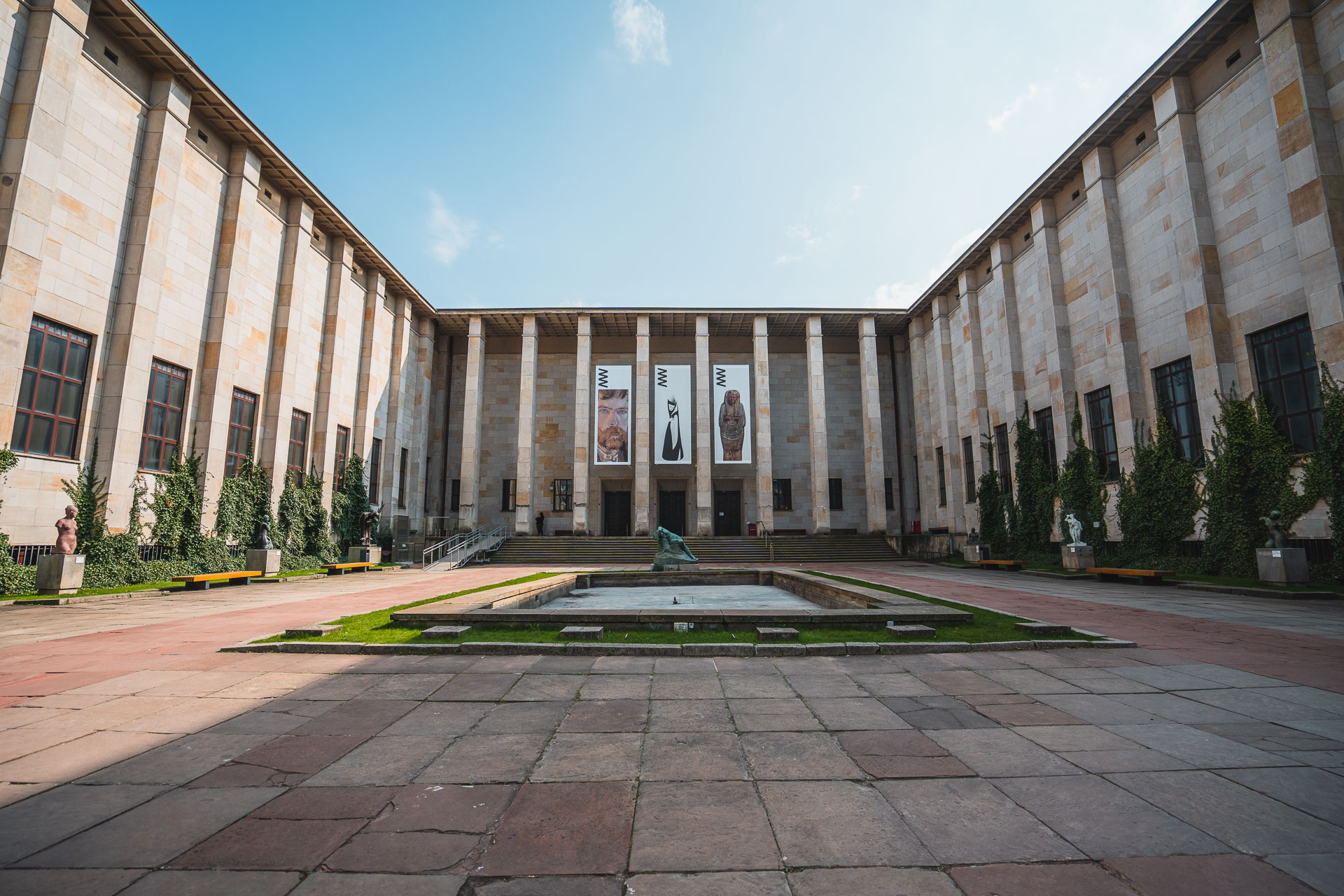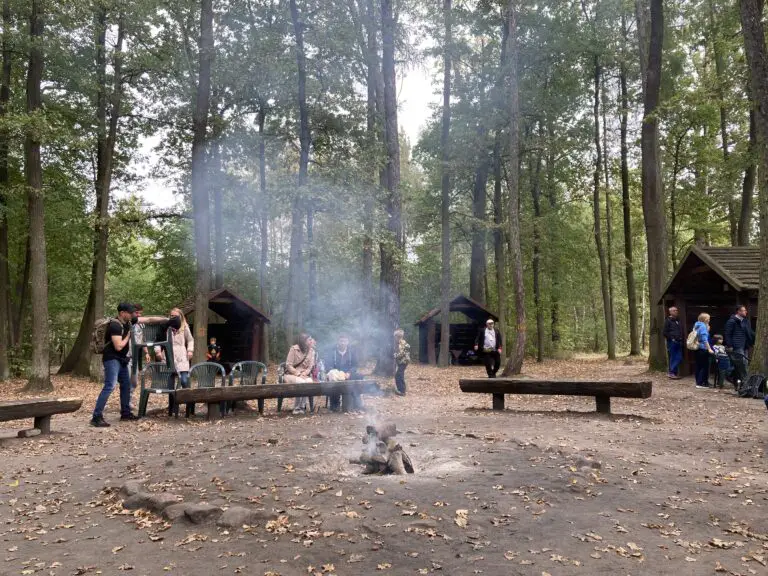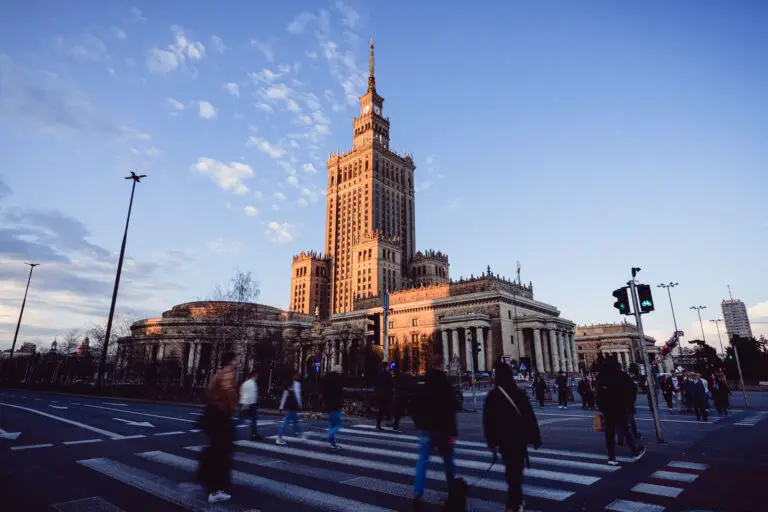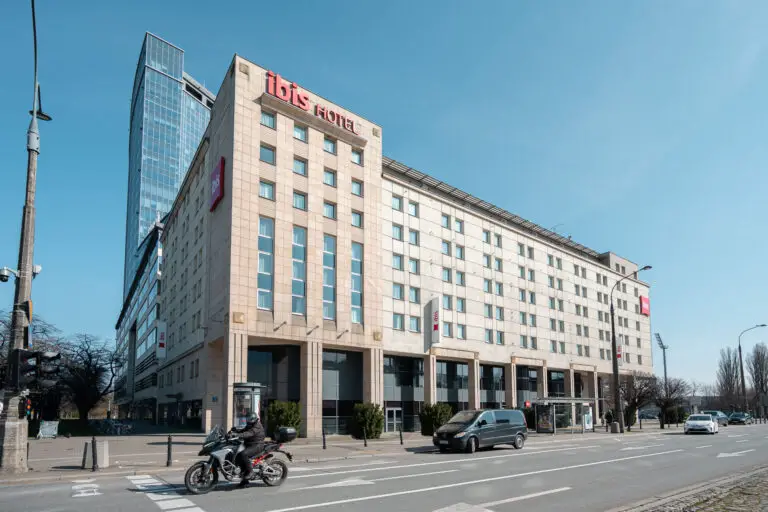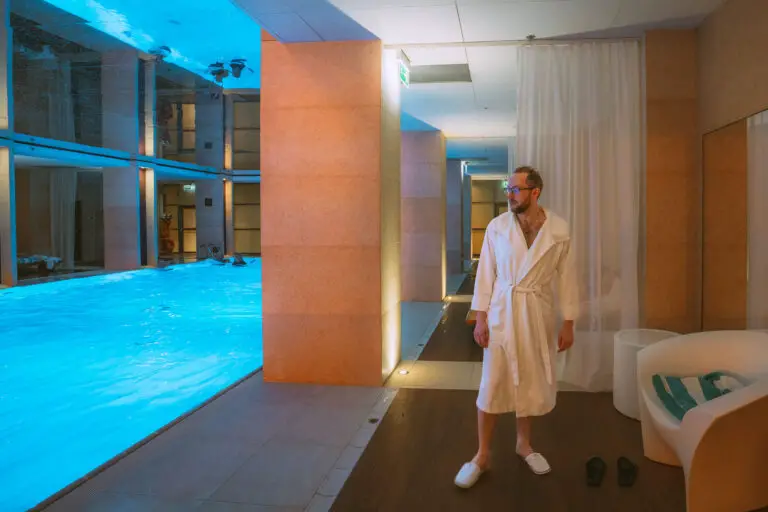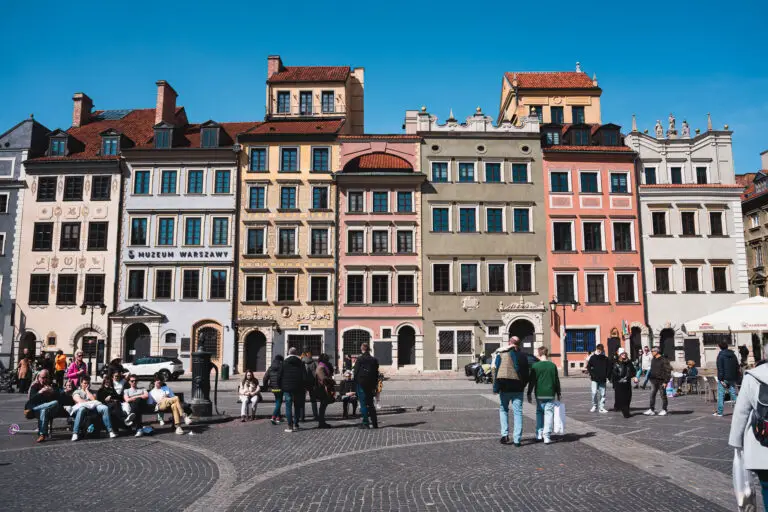Top 10 Best Museums in Warsaw in 2024
Warsaw is a city full of history. As well as being the national capital of Poland, Warsaw has hosted many important events in history. Thus, it is not surprising that Warsaw has a collection of the best museums in all of Poland. From art to history lessons taught in castles and palaces, there is something for everyone to learn about and explore in Warsaw. This list holds 10 of the best museums in Warsaw.
While there are dozens of decent to fantastic museums in Warsaw, I have selected those of which I have considered 10 of the best and most important to visit. I assume that you will only be staying for a few days at a time. However, if you have more time, you should definitely visit more than is on this list, and you can find some more museums on another list I created. I believe all the museums on this list will open a window to something especially important to explaining Warsaw and adding to your experience.
This guide will include a basic description of each museum and information on ticket prices, availability, opening hours, and how to get to each of them. If you should need more information that I provide, the websites of each of the museums are also linked in the descriptions. I hope you find this guide helpful and that you get the chance to visit many of them when visiting Warsaw!
1. The National Museum in Warsaw
Location: https://goo.gl/maps/cimW7q4UrzzWG5xt9 | Website: https://www.mnw.art.pl/en/
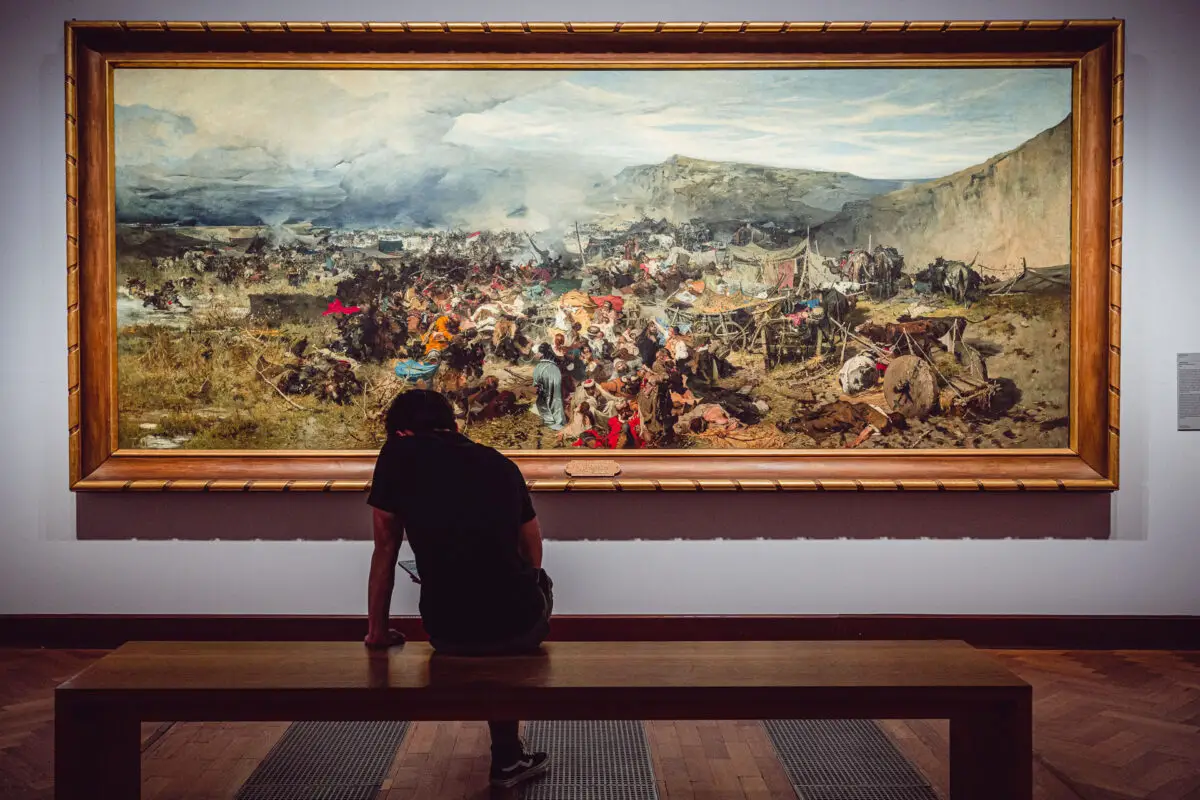
Description: The National Museum in Warsaw is Poland’s equivalent of the Met in New York. The largest collections of pretty much every type of art available in Poland can be found within this stately building’s halls. However, this museum is still severely under visited. At least when I have visited myself or walked by, there never seemed to be a ton of people there. And that is a shame.
On the lower floors you will find some amazing exhibits full of bought archaeological finds from some of the oldest civilizations known to man, especially Egypt. The Egypt collection holds everything you would expect to find in an Egypt section, with detailed signs explaining what every piece is, and where very piece originally came from. Crossing the hall leads to one of the largest collections of Nubian relics in Europe. These were brought to Poland as a thank you for saving the works from flooding caused by the Aswan High Dam.
As you head further into the museum, you will find massive collections of medieval and gothic-era artwork reminiscent of Poland’s past historical power. I was especially impressed by the massive number of religious paraphernalia from many centuries ago, collected from churches and cathedrals from all over Poland. The massiveness of it all reminds you of just how important religion has been to Polish people since its first statehood centuries ago.
But the crown jewel of this museum is the more modern paintings. While the artists might not be famous worldwide, I had never heard of a single artist, that does not mean the paintings are not beautiful. You will find pastoral scenes of nature and farms mixed with whimsical paintings of people. All paintings paint a picture of what Poland was like during these times, an agricultural power subjugated under various regimes throughout its more recent history.
So, do not pass up on this museum. It is close to everything, and it is easy to spend 2-3 hours here, or more if you really like art.
Planning to visit Warsaw soon?
🛫Booking flights to Warsaw: For booking flights, we love to compare prices on Expedia and Kayak.
🛏️Booking hotels in Warsaw: When looking for hotels, we recommend using Booking.com and Hotels.com. We stayed at a couple of hotels in Warsaw and liked the following ones:
- Hostel Lwowska 11 (Budget)
- Ibis Warszawa Stare Miasto (Mid-Range)
- Sofitel Warsaw Victoria (High-End)
⛪Booking tours in Warsaw: Viator is a great platform for finding tours and excursions to join. The following ones are particularly interesting:
- Chopin Concerts at the Fryderyk Concert Hall (every day)
- One-Day Auschwitz and Krakow Tour from Warsaw
- Historical Guided Tour of Warsaw
- Warsaw Food Tasting Tour (very tasty)
🛣️Renting a car in Warsaw: Discover Cars is the platform we use when renting a car in Poland.
Price: Regular fee 25 PLN. Children/teens/students under 26 1 PLN. Children under 7 free. You can buy an individual guided tour for 350 PLN in English or a variety of other languages. In Polish tour these cost 250 PLN. Admission is free for all on Tuesdays and reduced in price by 50% from 5 to 8 pm on Fridays. Tickets can be bought online ahead of time or at the ticket booth.
Opening Hours: Tuesday-Sunday 10 AM – 6 PM. Friday 10 AM – 8PM. Closed Mondays and some holidays. Visit the website for all holiday hours.
How to Get There: There is a dedicated tram stop for the museum called Muzeum Narodowe, with trams running west and east. It is a 2-stop ride from the city center, and a 2-3 stop ride from Praga. From farther away, there are direct trams here from Ochota and Wola as well. There are also a few bus stops nearby, with buses such as Bus 180 arriving from Mokotów in the south and Żoliborz in the north. Basically, you can get directly here from pretty much anywhere with a 75-minute transit ticket.
2. Copernicus Science Center
Location: https://goo.gl/maps/sH8ZimAZ5DXyJFyu7 | Website: https://www.kopernik.org.pl/en
Description: While the name is not indicative of a museum, the Copernicus Science Center is certainly a museum, despite what their own website might claim. Here you will find many hands-on activities related to science, in the spirit of famed Polish scientist Nicolaus Copernicus. And that is what makes this “museum” great, you get the chance to experience science directly.
The Science Center houses over 400 different activities that the Science Center’s website claims take 3-5 hours to see all of them. Now, having been there briefly, you can probably explore the museum in closer to 2 hours if you’d want, but this is an easy place to spend half of a day if you so desire. Especially if you have kids, the Science Center is a top destination in Warsaw for your young ones.
If you finish the exhibits and are not satisfied, there is also a planetarium with a separate entrance and a separate ticket, where you can learn about space and the stars, in the spirit of Copernicus and his famous theories that shaped modern views of the space. You can also venture onto the rooftop gardens for a stunning view of the next-door Vistula River and a decent view of the Warsaw city skyline. So, for a long day of activities that are super child-friendly, visit the Copernicus Science Center.
Price: Prices to the Science Center are dynamic. On weekdays, the museum costs 40 PLN, or 28 PLN reduced, and on weekends and holidays the museum costs just a little bit more, at 42 PLN, or 29 PLN reduced. Planetarium tickets depend on what is being shown. The regular 2D Movie costs 28 PLN, or 20 PLN reduced, and special shows and concerts cost 42 PLN for all participants. It is recommended to buy all tickets online beforehand, as they usually sell out before you can buy them upon arrival.
Opening Hours: The Science Center is open from 9 AM to 7 PM from Tuesday to Thursday and on Saturday and Sunday. On Fridays, the Science Center is open for an extra hour from 9 AM to 8 PM. On Monday, it is closed, as well as some holidays. The planetarium hours are 10 AM to 7:30 PM on Tuesday and Wednesday, 10 AM to 8 PM on Thursdays, and Saturdays and Sundays, and 10 AM to 9 PM on Fridays. Additionally, the planetarium is still open on Mondays, from 10 AM to 3:30 PM.
The rooftop gardens are open only open during the warmer and brighter months. From May to August, the gardens are open 7 days a week from 10 AM to 8 PM. In September and October, the gardens are open from 10 AM to 5 PM 7 days per week. And the gardens are closed from November to April each year. Finally, parking is available every day from 7 AM to 10 PM.
How to Get There: The Science Center is served by its own M2 metro station, only two stops east of the city center. This is by far the easiest way to get to the museum. But there are also a few bus lines serving nearby the Science Center. Bus 106 starts near the Old Town, but also comes from Wola. Bus 118 too starts near the Old Town, but also serves Mokotów. Finally, Bus 127 arrives from Ochota via the city center. All three buses stop only a 2-minute walk from the Science Center.
3. Wilanów Palace Museum
Location: https://goo.gl/maps/tZiGJDB5fc43yn4S7 | Website: https://www.wilanow-palac.pl/
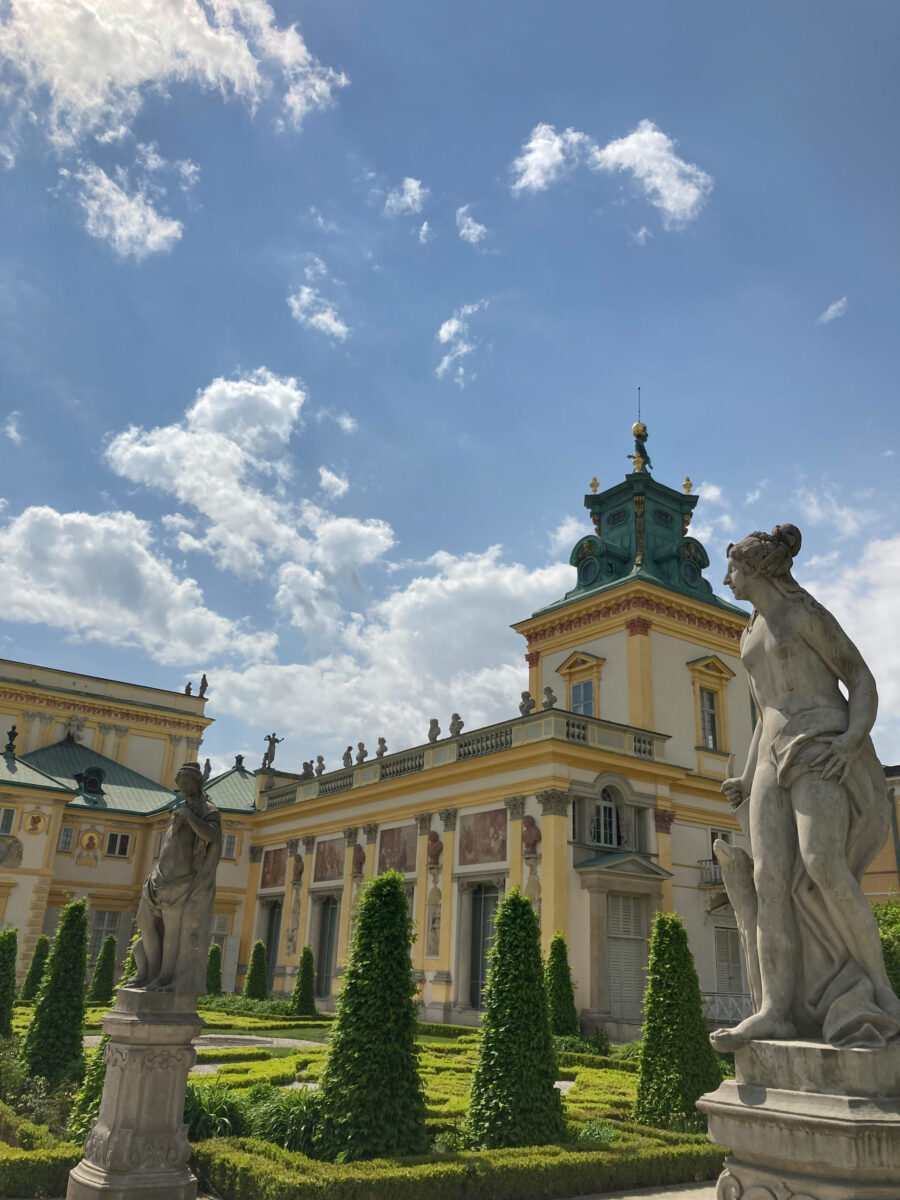
Description: Any way you look at it, the Wilanów Palace is one of things you must do in Warsaw, no matter how long you stay in Warsaw. It is simply beautiful. It is also a romantic place to spend with your special someone. Naturally, Wilanów is very popular amongst visitors and locals alike, especially school groups during the school year. So, plan for large amounts of people when visiting, but not too many to diminish the experience.
While certainly the beautiful yellow and white exterior of the mostly preserved palace is a perfect photo opportunity, as well as the beautifully maintained gardens, the museum inside the palace is extremely interesting. Inside, you will learn about the era when Wilanów was the royal palace of Jan III Sobieski. It was designed in a Baroque style, and you can admire the sculpture work and high painted ceilings in many parts of the museum, as you walk through the former rooms of Polish royals. You can also see how each respective owner adapted the palace to match current fashion at the time.
With many wealthy residents, it is no surprise that there are a lot of artworks here, bought by past owners. In fact, the palace was opened to the public in the 1800s, making it one of the first public museums in Poland. You will find large collections of 18th and 19th century paintings, and a large collection of Chinese furniture, cooking ware, artwork, and much more, that is perhaps the most impressive collection in the museum.
Overall, the museum helps illustrate a more peaceful time in Polish history, and the collections are some of the best ones in Poland. It is worth your time to visit here.
Price: Regular tickets cost 35 PLN including garden admission. The reduced ticket costs 28 PLN. Children under 6 are free. Tickets can be bought online ahead of time, which the website recommends, but I only recommend it if you plan on getting there in the afternoon when it is busiest. Otherwise, buy tickets at the small ticket booth found a short walk from the large iron gate. Do not buy tickets from the ticket machines, they only work for admission to the garden. On Thursdays, tickets are free, and can only be “purchased” at the ticket booth.
Opening Hours: As of February 1, 2023, the museum is open daily from 10 AM to 4 PM, with the last entrance at 3 PM. The hours of the park change based on the season. Always make sure to check the website before visiting to see the most up-to-date hours.
How to Get There: Usually, you can get to the palace using either Bus 116 or 180 from the city center or Old Town in about 30 minutes. However, due to construction of a new tram line, the route these buses take is a huge mess right now, and it might take up to an hour this way. Thus, you should instead take the M1 metro line to the Wilanowska metro station, and transfer to either Bus 139, 200, or 251 to Wilanów 01.
4. The Royal Castle in Warsaw
Location: https://goo.gl/maps/NzXvj7rD19eUyeBr6 | Website: https://www.zamek-krolewski.pl/en

Description: While the Royal Castle is indeed a castle, the castle houses a museum that tells a story about when the castle was in used for its intended purpose, as the home of the royal family of Poland. The original castle was built somewhere between the 12th and 14th centuries, and what you see today is a faithful reconstruction after much of the castle was destroyed during WWII.
The main part of the castle takes you through re-creations of the royal rooms, including the royal bedrooms, dining rooms, state rooms, seat of the Polish Sejm, and more. Along the way, with the help of the highly recommended on my part audio guide, you will learn about all the royals of Poland who lived in the castle, and what Poland was like in its Golden Age. You can also make your way into the basement to see some of what remains of the original castle, and work your way upstairs to see fancy works of art.
Beyond the main building you can also visit the Tin-roofed Palace, which was originally a tenement house, but eventually was bought by a Polish king, and used as apartments for the royal court. Today you will find a large collection of Oriental and European artwork. You can also attend the temporary exhibition, which is usually related to some famous Polish person, currently Copernicus. Finally, you should also take a stroll in the free castle gardens and enjoy the maze of hedges and beautiful fountains.
Overall, there is a lot to do at the castle, and you can easily spend half a day here, or just an hour or two if you want. The Royal Castle is one of the most prominent buildings in Warsaw, and you should not skip the museum inside for a clear picture of the Golden Era of Poland.
Price: With so many different parts, the pricing can get a little complicated. I will do my best to sum it up. For all the exhibits in the main building, a ticket costs 50 PLN, or 40 PLN reduced, which includes a complimentary audio guide. However, the Gallery of Masterpieces, in the main castle, is a separate exhibition, with tickets costing 40 PLN or 30 PLN reduced. The Tin-Roofed Palace costs 30 PLN or 20 PLN reduced. Finally, the current temporary exhibition on Copernicus costs 45 PLN or 35 PLN reduced, but if you attended the Copernicus Planetarium you can get a discount for 23 PLN and 16 PLN respectively.
Because a joint ticket is not possible, the best day to visit the castle is Wednesday, when you can visit the Royal Route, minus a few rooms that are closed, and the Gallery of Masterpieces for free. Then you can choose to pay for the Tin-roofed Palace or whichever temporary exhibition is in place. On free days, audio guides cost 10 PLN. Finally, children up to 7 are always free.
Opening Hours: The Royal Castle is split into a variety of buildings with different hours. The main exhibits in the main part of the castle, such as the Royal Route, the Gallery of Masterpieces, and the Kubicki Arcades, are open from Tuesday to Sunday from 10 AM to 6 PM, with last entry at 5 PM.
The Tin-roofed Palace is open only on Wednesdays, and weekends, also from 10 AM to 6 PM with last entry at 5 PM. The temporary exhibit at present is open from Tuesday to Sunday from 12 PM to 8 PM with last entry at 7 PM. All these exhibits are closed on Mondays, with the Tin-roofed Palace being closed on Monday, Tuesday, Thursday, and Friday.
The free Royal Gardens are also open for longer hours. From Tuesday to Sunday the Upper Garden is open from 10 AM to 8 PM, and the Lower Garden is open from 10 AM to 10 PM. On Mondays, the gardens stay open from 10 AM to 6 PM. Just note that many special events take place at the Royal Castle, especially related to foreign politicians giving speeches, so make sure to check if any huge events are happening, as then everything will be closed.
How to Get There: The Royal Castle is right at the entrance to the Old Town and at the north end of the Royal Route. Thus, it is very well served by transit. There is a tram line just below the castle that is served by trams from the city center, specifically Tram 4, and also from Wola and Praga. There are also many buses that stop nearby at the Plac Zamkowy bus stop, and Bus 175 from the airport via the city center also stops nearby. Finally, the M1 metro line and M2 metro lines are only about 15-minute walks each from the Old Town.
5. Warsaw Uprising Museum
Location: https://goo.gl/maps/Av8rvyjfnDY7hZzK7 | Website: https://www.1944.pl/
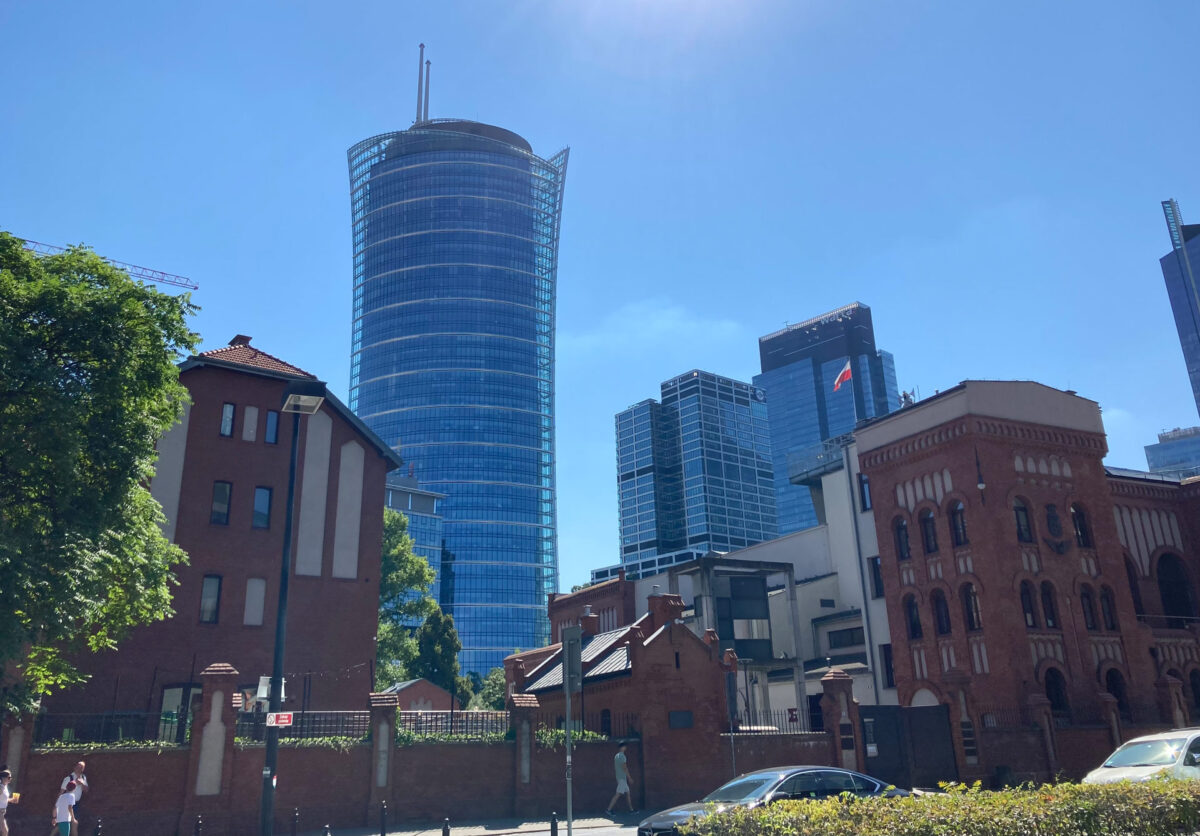
Description: The Warsaw Uprising Museum is one of the most poignant in all of Warsaw. This museum tells the story of one of the biggest atrocities committed against Polish people during WWII by the German Nazi forces. During 1944, the people of Warsaw strived to revolt against their oppressors, but were brutally repressed, with tens of thousands of Polish people killed indiscriminately in response to the uprising, and eventually most of Warsaw being burned to the ground.
The museum starts by setting the stage for the uprising by telling the tale of how WWII started and what Poland was like under the Nazi regime. You will learn many poignant stories through the point-of-view provided by letters from the time. Eventually, you will get to the largest section of the museum, which will describe how the uprising went down, and the saddening aftermath that followed.
While this museum might not be for those who dislike depressing stories, I think it is a necessary museum to visit as it is a worst-case example of the depressing history of Poland in more recent times and helps explain the strong nationalism and Polish pride present today.
Price: Regular tickets cost 30 PLN. The reduced ticket costs 25 PLN. Tickets can be bought online, but I found that it is not a big deal to buy them on the same day. Additionally, tickets are free for everyone on Mondays, while like other Warsaw attractions, you cannot reserve a ticket ahead of time.
Opening Hours: The Museum is closed on Tuesdays and open every other day of the week from 10 AM to 6 PM. Make sure, as always, to check the website to see which holidays the museum is open on, as it varies from museum to museum.
How to Get There: The Uprising Museum is generally one of the easiest museums to get to in Warsaw, not directly in the city center or Old Town. There is a dedicated tram stop for the museum. Tram 22 goes directly here from the city center, or you can take Tram 1 from Ochota. Just north of the museum there is also a major east/west tram line that comes from the Old Town. Or there is an M2 metro stop only about a 6-minute walk from the museum.
6. POLIN Museum of the History of the Polish Jews
Location: https://goo.gl/maps/zUvgekfCJz2v96JS8 | Website: https://polin.pl/en
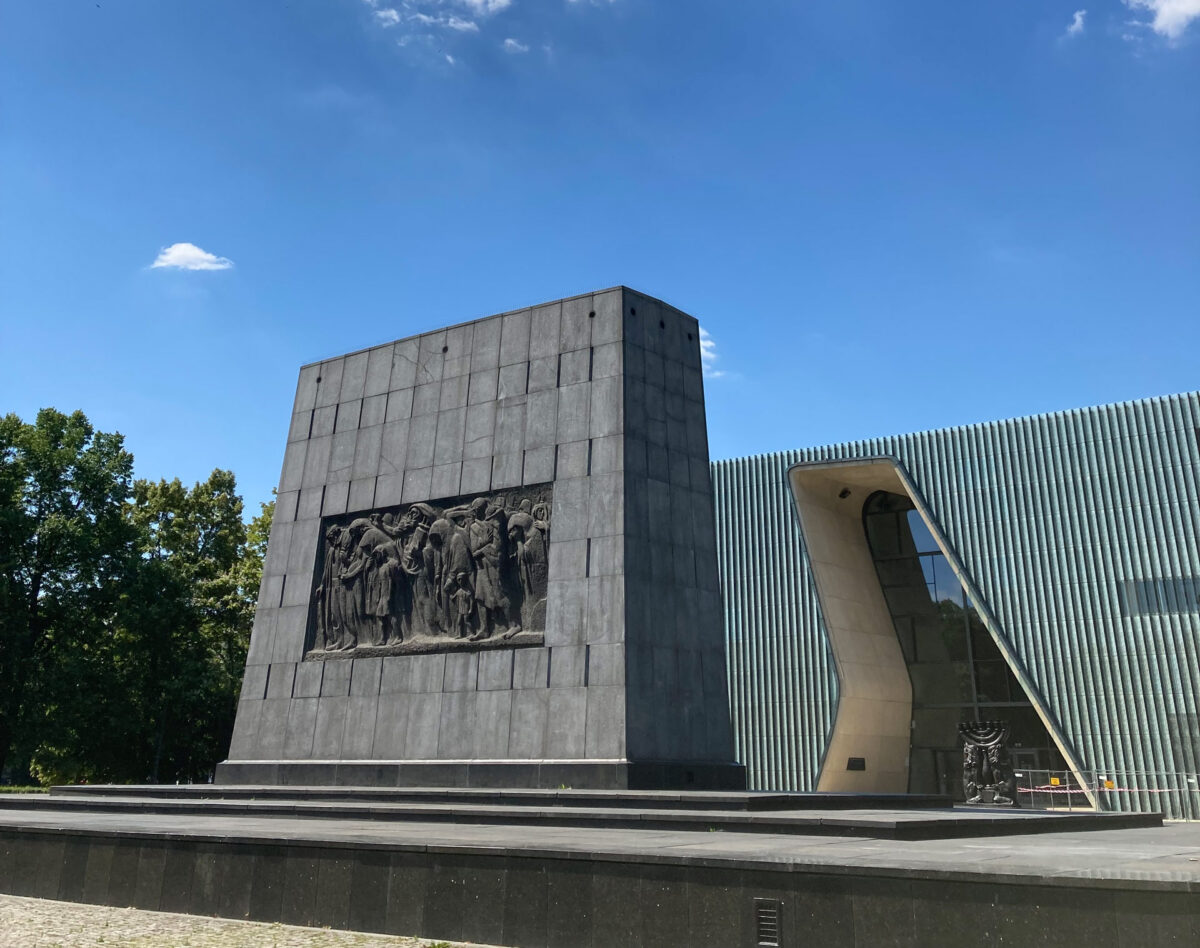
Description: This beautifully designed building in a very quiet, and sunny, block north of the city center, houses a collection of somber, but somewhat hopeful, exhibits on the life of Jewish people in Poland. Jews have had a long history in Poland and were once a significant part of the population of Poland, and Warsaw. Where the museum is today was once a main Jewish hub of activity, and eventually nearby the Warsaw Ghetto.
WWII changed the fortunes of Jews in Poland forever, with over 99% of all Jews in Poland fleeing or being killed during the genocidal practices of Nazi Germany. This museum tells that sad tale, while also focusing on when Jewish people were thriving, and the future of Jews in Poland. This museum is a must-see if you are in Warsaw. It also has won an award for being an outstanding museum in recent times, so it is also just a good museum beyond the important story it tells.
Price: A regular-priced ticket to the exhibition costs 45 PLN, and a reduced ticket costs 35 PLN, and if you have a Polish student card you can get in for only 1 PLN. An audio guide is included with this price. The museum is completely free on Thursdays, with an audio guide then costing 10 PLN on the free day. The museum encourages you to buy your ticket online due to the high number of visitors most days.
Opening Hours: The museum is open from 10 AM to 6 PM on Mondays, Wednesdays, Thursdays, Fridays, and Sundays. It is open for a few more hours on Saturdays from 10 AM to 8 PM. Finally, on Tuesdays, the museum is closed, and on some holidays.
How to Get There: There are two north-south tram lines nearby. Both Tram 17 and Tram 33 stop west of the museum at Anielewicza, arriving from the city center. To the east, there are many trams that arrive from the city center and nearer to the Old Town, stopping at Muranów. For a direct route from the Old Town, Bus 180 stops right at the museum at Nalewki – Muzuem.
7. Museum of Fryderyk Chopin in Warsaw
Location: https://goo.gl/maps/f5pg8Ag4kCuscg77A | Website: https://muzeum.nifc.pl/en
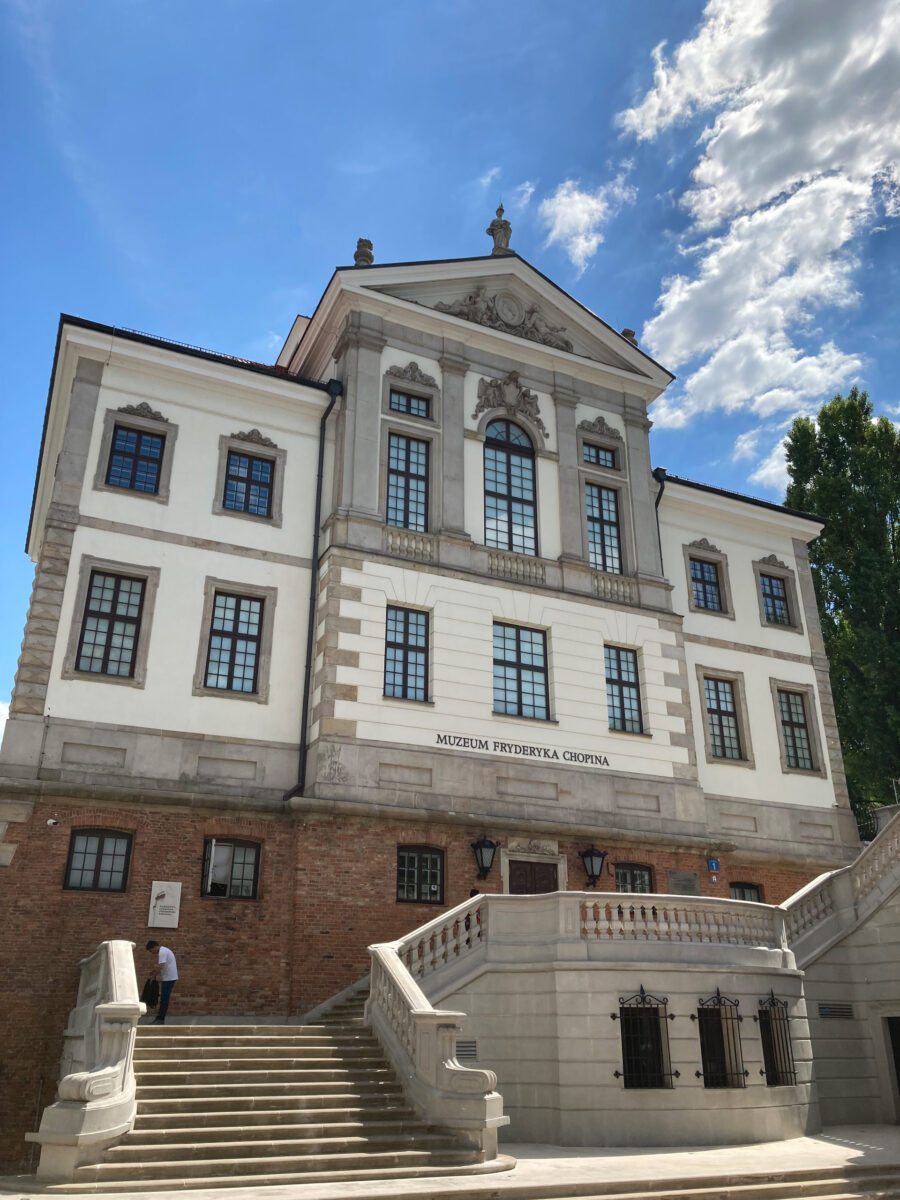
Description: Fryderyk Chopin is one of Poland’s most famous people. The romantic composer created some of the most famous and beautiful piano pieces known worldwide during the 19th century. While Chopin was born in a village outside of Warsaw, he spent most of his life in Warsaw and attended the University of Warsaw. Thus, Warsaw celebrates Chopin immensely, with the airport being named after him, as well as a university, and many monuments.
This museum aims to explain why Chopin is so beloved. It starts with his childhood years and life in Warsaw during the Polish partition. It explains Chopin’s rise in standing amongst locals about his piano prowess. But the best part of the museum is certainly the variety of interactive stations where you can just sit and listen to his music.
Overall, this museum is a must-visit because of how important Chopin is in Polish history, the thoroughness of the information provided by this museum, and the opportunity to relax while listening to Chopin’s beautiful music. And, being not far from the main attractions of Warsaw, it is an easy side trip to make.
Price: A regular ticket is 25 PLN, and a reduced ticket is 15 PLN. You can also buy a family ticket for 65 PLN, which includes admission for parents and children, up to 6 people. Additionally, the museum is free for children 7 and under, and free for all on Wednesdays. There are general sightseeing tours for free in Polish or English available too, as well as group guided tours for an added fee.
Opening Hours: The museum is open from Tuesday to Sunday from 10 AM to 6 PM. The museum is fully closed on Monday. For this museum, especially check to see if it is open at all, as it was closed extensively until recently, and it is unclear for what reason this was. As always, check the website for hours on holidays.
How to Get There: The museum is in a transit dead spot. But it is not far from the M2 metro line’s stop at Nowy Świat-Uniwersytet. There is also a bus station downhill from the museum, with Bus 106 coming from Wola, and Bus 162 coming from Praga. These are the only transit options to the museum, but the first one is at least somewhat close to it and uphill if you have mobility issues.
8. Museum of Life in the Polish People’s Republic
Location: https://goo.gl/maps/f7i9jvQTzZsyEwDh9 | Website: https://mzprl.pl/?lang=en
Description: For around 45 years, the country of Poland was subjugated to communist rule by force. While independent from the Soviet Union, the Soviet Union ensured that it oversaw Poland until the Solidarity Movement eventually led to the current republic of Poland. This museum explains what life was like during this time. It is especially geared towards younger people not old enough to remember or have lived through that version of Poland, or for tourist interested in a peak behind the Iron Curtain.
Thus, the museum holds a large amount of memorabilia from the era and using this to illustrate the everyday life of the average person in Poland. This is done while placing the major historic events of the time in context with how it affected the Polish people. Overall, this museum is the best museum in Warsaw to better understand what went down in Poland during these times. I highly recommend it for these reasons.
Price: A normal ticket costs 26 PLN, and a reduced ticket costs 18 PLN. You can also buy a 3-person family ticket for 64 PLN, and a four-person family ticket for 80 PLN. Children up to 5 are free. You can also buy a Walkman-style audio guide for 10 PLN. The museum recommends buying tickets online ahead of time, as only 50 people per hour are allowed into the museum, due to its small size.
Opening Hours: The museum is open 7 days a week. From Monday to Thursday, the museum is open from 10 AM to 6 PM. On Fridays, it is open from 12 PM To 8 PM. On weekends, the museum is also open from 10 AM to 6 PM. The museum will be closed on major holidays.
How to Get There: The museum is found not far from the city center, at Plac Konstytucji to be exact. It is only two tram stops south of the city center, so you can take any north-south tram from the center there. You are also only a short walk from Metro Politechnika on the M1 metro line. Additionally, some of the trams that stop by the museum serve other Warsaw neighborhoods, such as Tram 4 serving Mokotów, Tram 15 from Ochota, and Tram 78 from Wola.
9. Neon Museum
Location: https://goo.gl/maps/ZDisEYhLy3H1Wj5h9 | Website: http://www.neonmuzeum.org/
Description: The Neon Museum is a small, unassuming museum hidden in a former industrial warehouse in the trendy Praga neighborhood. But, once inside, you will be exposed to a side of Warsaw’s history that is not talked about much in other museums. This is related to the many neon signs that were used to adorn buildings on the main streets of Warsaw during its days under communist rule.
In this museum, you will learn about the history of neon, how it came to be that Warsaw had so many neon signs and get to see some of these neon signs themselves. The museum has dedicated itself to restoring and preserving the neon heritage of Warsaw, and the signs are very beautiful! While the museum is not large, you can get a little piece of history with each sign, and if you want the full experience, you can watch the 52-minute documentary in Polish (with English subtitles) about Warsaw and neon.
This museum is also a perfect place for photos. But it is important to note that no cameras of any sort are allowed, only phone cameras. And you cannot do any sort of commercial photoshoot here, such as a paid Instagram shoot or for advertising, without a license. They do not publish these rules very clearly online, so make sure to contact them ahead of time if you plan to do anything you think might be related to commercial photography.
So, while this museum is small, and I only spent 45 minutes here, it is still worth it for a unique experience you cannot get elsewhere in Warsaw. So, I recommend visiting here.
Price: Regular tickets cost 16 PLN. The reduced ticket is slightly less at 13 PLN. There is no free day offered because the Neon Museum is privately funded, while other museums that offer free days receive government funding to allow this. But I found the cost reasonable for what there is to do. You can also buy a 45-minute guided tour at an added 150 PLN in English but need 10 people for this to be allowable and must make a reservation in advance.
Opening Hours: The museum is open every day, with the hours being 12 PM to 6 PM from Monday to Saturday, and from 11 AM to 5 PM on Sundays. Check the website for holiday hours.
How to Get There: The museum is far from everything. You will arrive at the tram station Gocławska for certain, before walking about 5 minutes to the museum. Tram 22 will get you there from the city center, and Tram 26 will take you there from the Old Town. There is no direct bus service from the west side of Warsaw to near the museum at present, so you will have to take either of these two trams or make a transfer at some point.
10. Maria Skłodowska-Curie Museum
Location: https://goo.gl/maps/ZDisEYhLy3H1Wj5h9 | Website: https://www.mmsc.waw.pl/en/
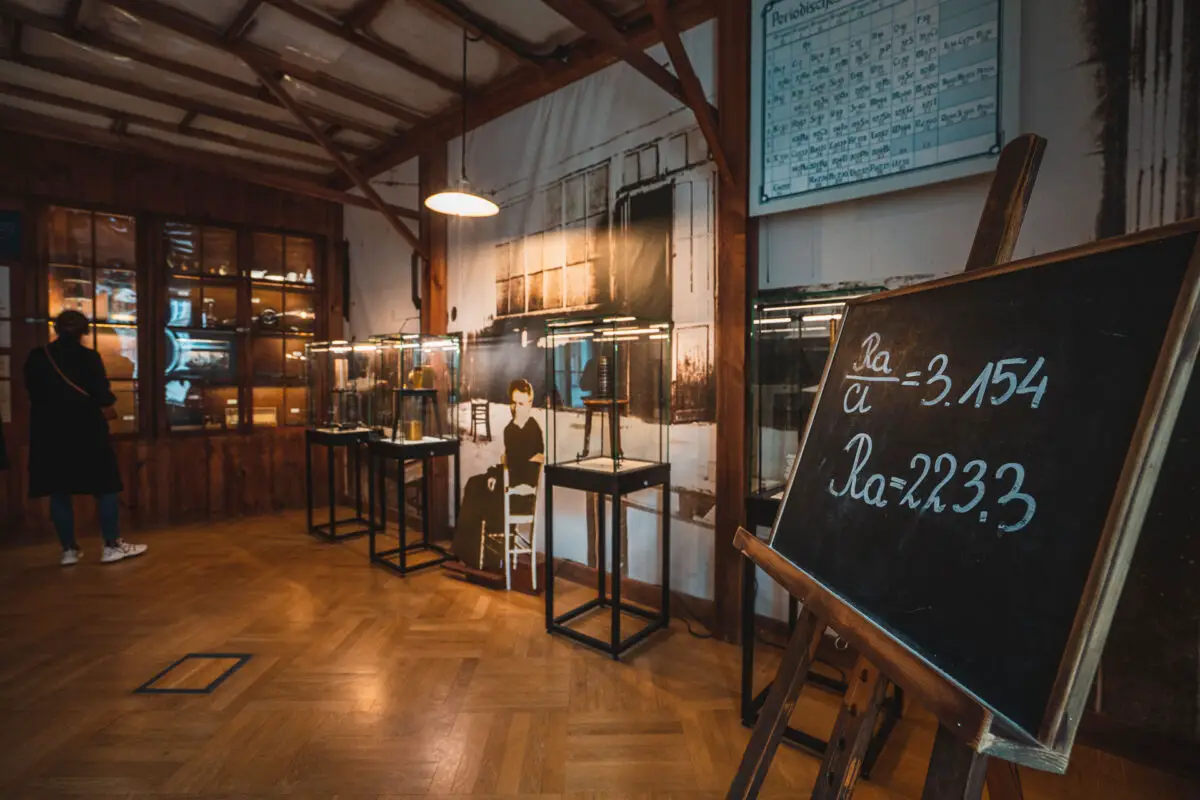
Description: Maria Skłodowska-Curie is one of Poland’s most famous citizens, and most people are not aware that she is even Polish. But Polish people are very aware of this and celebrate her at a maximum level. There are many things, from universities to streets, named after her in Poland, and it makes sense that Warsaw has a museum dedicated to her.
Within the museum, which is housed in a tenement house where she was born, you will learn about her and her life through artifacts from her life, including an extensive collection of letters. You will learn about how her education progressed to the point where she became a two-time winner of a Nobel Prize in two different fields. Overall, due to its low price and interesting information provided, this museum should be attended. As it is only a 5-minute walk from the Old Town too, you have no reason to skip it!
Price: This museum is very affordable. A normal ticket costs 11 PLN, and a discounted ticket costs 6 PLN. This includes an audio guide in either Polish or English. On Tuesdays, the museum is free of charge.
Opening Hours: The museum is open from 12 PM to 6 PM from Tuesdays to Saturdays. Last entry to the exhibitions is 30 minutes before closing. On Sundays and Mondays, the museum is closed.
How to Get There: The museum is just north of the Old Town. So, your best bet to get there is to take a bus or tram to the Old Town. From the city center, this might be Tram 4. Or you can take Bus 116 or Bus 180 to the Plac Krasińskich stop and walk about 5 minutes from there.
Conclusions on the Best Museums in Warsaw
As you see now, Warsaw is full of amazing museums that are overall affordable and could take up a significant part of your stay in Warsaw if you wished. You can learn about many eras of Polish history, learn about science, or admire artwork. One thing is for sure, you are going to want to visit at least 2 to 3 of the museums on this list no matter how long you stay in Warsaw.
If you need further inspiration, consider these 5 museums:
- Polish Army Museum
- Warsaw Fotoplastikon
- Pawiak Prison Museum
- National Museum of Ethnography
- Museum of Praga

